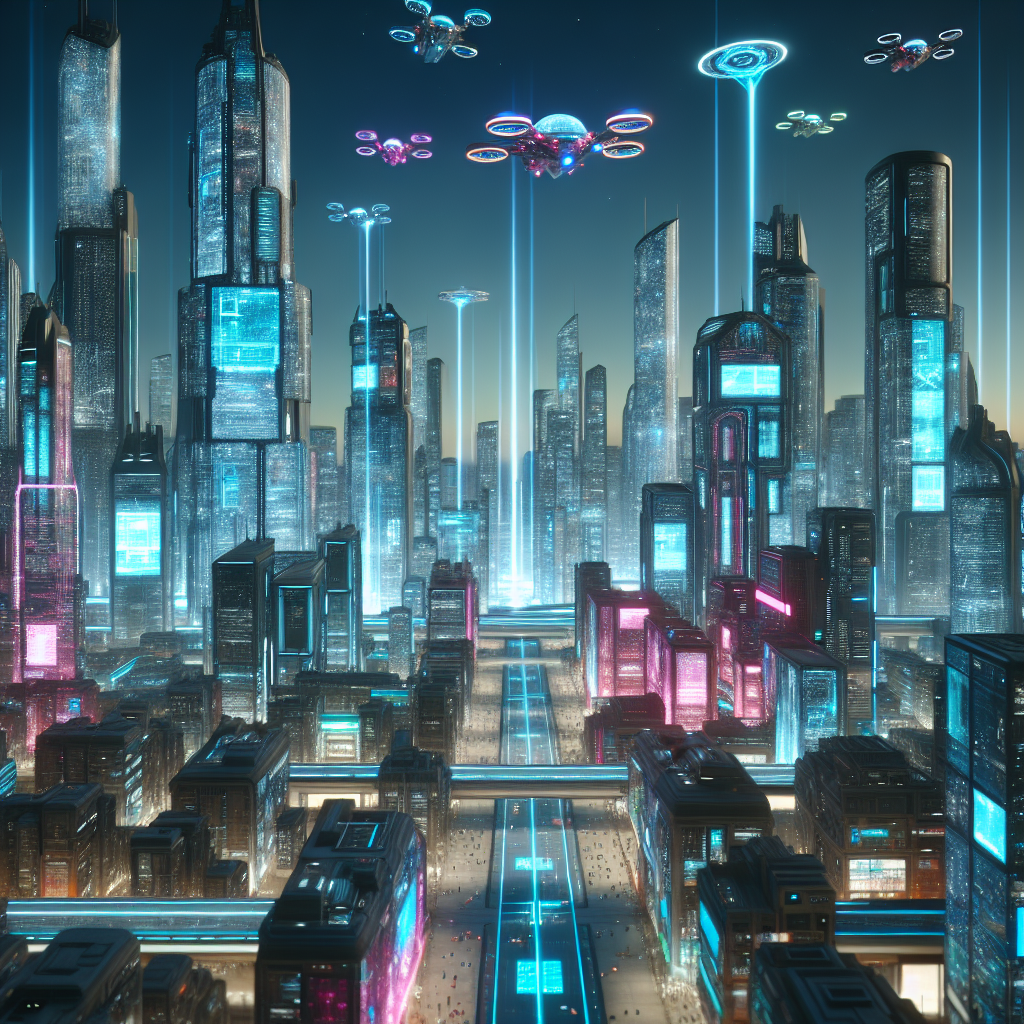Unveiling the Cinematic Potential of AI: Crafting Movie Trailers in the Digital Age
The art of filmmaking has long been a meticulous craft, requiring the collective effort of creatives and technical experts. However, the advent of artificial intelligence has brought forth an era where the creation of cinematic content is no longer confined to human capability alone. From writing scripts to generating visuals, AI is becoming an integral tool for filmmakers, offering an unprecedented blend of speed and creativity. This article explores the process of creating movie trailers using AI, providing insights into the capabilities and limitations of current AI tools.
The Rise of AI in Filmmaking
AI's involvement in filmmaking is not entirely new, but its recent advancements have made it a more viable option for complex creative tasks, such as producing movie trailers. Trailers are crucial in marketing films – they need to capture the essence of a movie and entice audiences, all within a brief and engaging package. With AI, what once took a team weeks can now potentially be completed in a fraction of the time.
Crafting AI-Generated Trailers: A Step-by-Step Breakdown
Creating a movie trailer with AI involves several steps, each harnessing different facets of AI technology and requiring careful consideration to ensure cohesion and impact.
The Script: Chatbot Driven Narrative
The trailer creation process typically begins with a narrative outline. AI-driven chatbots like GPT-4 have the capability to craft detailed and evocative scripts based on specific prompts. A user might request a 15-scene outline featuring a well-known protagonist in a sci-fi setting, and AI can deliver a structured script that includes both visual and auditory elements needed for each scene.
Visuals: The Power of Generative AI
Once the script is ready, the visual journey begins. AI image generation tools such as Midjourney or DALL-E are used to create the trailer's still images. These tools can generate highly detailed and specific imagery based on text prompts, albeit with varying degrees of prompt adherence. The resulting images often need fine-tuning and selection to find the perfect match for each scene.
Animation: Bringing Still Images to Life
With still images in place, the next step involves animation. Platforms like Runway ML offer AI-powered tools to animate still images with a surprising level of subtlety and complexity. This step can introduce motion to clouds, holograms, or character gestures, enhancing the dynamism of the visuals.
Voiceover: Synthetic Narration
For the narration, text-to-speech AI like ElevenLabs can produce a voiceover that matches the desired tone and emotion of the trailer. AI voice modulation allows for deep, authoritative, and dramatic narrations that fit movie trailers perfectly, although it requires careful scripting to avoid a robotic delivery.
Audio Finishing Touches: Music and Sound Effects
Background music and sound effects are crucial in setting the mood of a trailer. AI music generators such as Mubert can create soundtracks that complement the visuals, while sound effect tools like Bark offer specific audio signals to enhance the viewing experience. These elements come together in editing software like DaVinci Resolve, where the final trailer is assembled.
The Challenges and Limitations of AI
Despite the impressive capabilities showcased by AI, there are still significant limitations. AI-generated images may lack the realism or specificity that a human artist can provide, and animations may sometimes come across as unnatural. Moreover, AI tends to struggle with understanding intricate human emotions and may not fully capture the subtleties required for a compelling narrative.
The Future of AI-Driven Trailers
The potential for AI to revolutionize trailer production – and filmmaking at large – is evident. As AI tools continue to improve, the gap between human and AI creativity may narrow, leading to more sophisticated and polished content. However, this raises questions about the role of human creativity in the future of the film industry and the ethical considerations around AI-generated content.
Conclusion
AI is proving to be a powerful asset in the realm of filmmaking, particularly in the creation of movie trailers. With the ability to generate scripts, visuals, animations, voiceovers, music, and sound effects, AI is streamlining the trailer production process. However, it is not without its limitations and continues to be an assistive tool rather than a replacement for human creativity. As the technology matures, it's plausible to envision a time when AI could autonomously produce trailers that rival those made by humans, propelling us further into an exciting era of digital storytelling.
For deeper insights into the influence of AI on the creative industries, explore the following resources:
- Understanding the Impact of AI on Creativity and the Arts
- Exploring the Technical Capabilities of AI in Art Generation
Whether AI will one day independently craft trailers that can fully engage human emotions and narratives remains to be seen. Yet, as we see the horizons of AI extend further into the creative realm, it's clear that the future of filmmaking and content creation is poised for a transformation powered by artificial intelligence.
Related News
- Revolutionizing Trailer Production with AI: A Deep Dive into the Future of Filmmaking
- The Dawn of AI-Generated Cinema: A Journey into the Future of Filmmaking
- The Dawn of a New Era in AI Video Generation
- Unleashing Creative Potential: How AI Transforms Content Creation
- Harnessing AI for Video Creation: A Deep Dive Into the Future of Content Production
